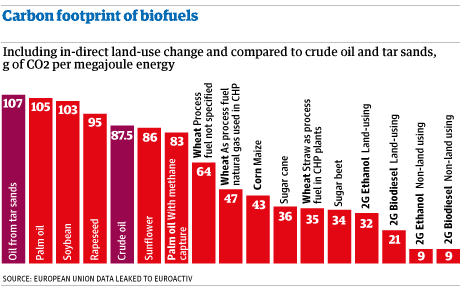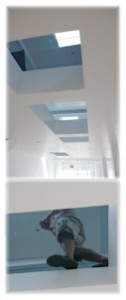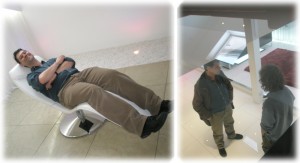Owners of Battersea Power Station, Palm Oil giants Sime Darby, want to build a bio-fuel power station at the site to power the massive development. To side step criticism they claim not have decided what bio-fuel it will use ( yeah right. Maybe Palm Oil?)
This blog has been sourced from an article by David Carrington, for The Guardian. Click here if you would prefer to view the full article.
A new data leak has revealed how certain bio-fuels can have a worse impact upon the environment then fossil fuels. Although some bio-fuels can be advantageous in preventing climate change, others such as palm oil are quite the opposite due to the large carbon footprint that they generate.
In distinguishing the good bio-fuels from the bad ones it is also important to account for factors such as deforestation and other man made sources of pollution that are involved in harvesting bio-fuels.
A diagram displaying the individual carbon footprint of bio-fuels in comparison to that of crude oil from tar sands, puts Palm oil just beneath that of the crude oil:
Second generation fuels (SG), particularly those that are land-using such as Biodiesel and Ethanol produce the least CO2. While sugar cane and corn maize are thankfully less harmful then crude oil, however their carbon footprint could still be considered a cause for concern.
Recently, the US environmental protection agency stated that Palm oil failed to meet the US requirement of emitting a minimum of 20% less carbon then the diesel produced from crude oil. Furthermore, bio-fuels campaigner Robbie Blake for Friends of the Earth Europe further condemned the use of Palm Oil (speaking to David Carrington):
“It’s getting quite indisputable that the use of soy or palm oil to fuel our cars is even dirtier than conventional fossil fuels. Forests in Asia and South America are being destroyed by the expansion of plantations to meet the European market. It’s a delusion for politicians to think that biodiesel will solve climate change.”
An important factor that helps assess how beneficial or environmentally unfriendly bio-fuels are is sourced from research into more sustainably advancements, with the latest examples in sourcing low carbon bio-fuel come from seaweed and algae.
An EU target has been made to ensure transport fuels incorporate 10% of bio-fuels by 2020. However the production of certain bio-fuels has been named ‘unethical’ in relation to the environment and to human rights. Research groups meanwhile have branded it ‘immoral’ to not look for an alternative to using fossil fuels.
For more information on this topic view the full article here, or try these related links:
Issues surrounding the production of second generation fuels, how the EU brands fuel sustainability, other recent studies into bio-fuel carbon footprints.
https://www.facebook.com/BatterseaAgainstBiofuels
http://www.biofuelwatch.org.uk/2013/battersea-biofuels/
Click Battersea Power Station for more blogs
See our Battersea Power Station project pages for more information and videos.
Or visit PlanA our general blog on urbanism, planning and architecture.
Spectacle homepage
Like Spectacle Documentaries on Facebook
Follow SpectacleMedia on Twitter





